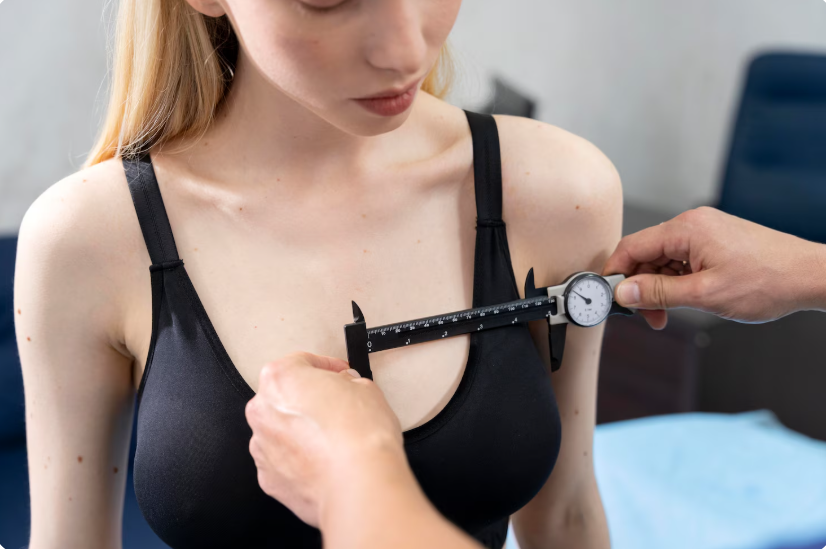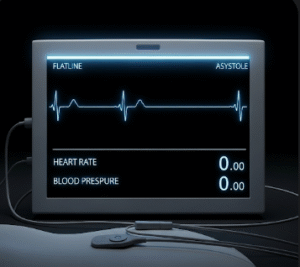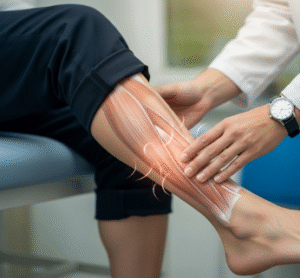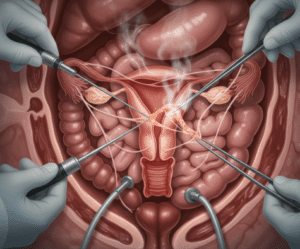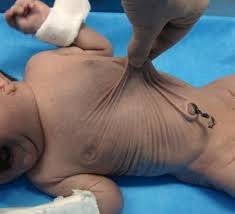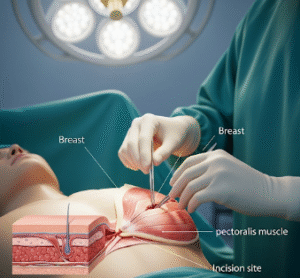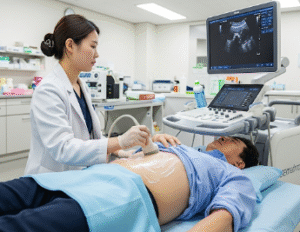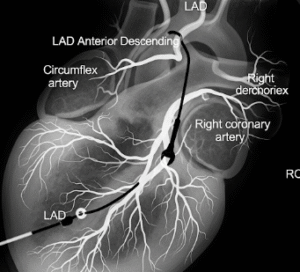What It Is
Pectoral implant surgery is a cosmetic procedure designed to enhance the shape, size, and definition of the chest muscles in men. Unlike liposuction or fat removal, this surgery involves placing specially designed silicone implants beneath the chest muscle to create a firmer, more athletic, and masculine appearance.
In Korea, pectoral implant procedures are performed in advanced plastic surgery hospitals and clinics that specialize in body contouring for men, using safe surgical methods and implants tailored to individual anatomy.
Why It’s Done
Men typically seek pectoral implant surgery to:
- Achieve a more muscular and defined chest contour when exercise alone does not provide the desired results.
- Correct chest asymmetry or underdevelopment (congenital or due to injury).
- Restore chest shape after significant weight loss.
- Enhance self-confidence and body proportions.
It is especially popular among men who want a stronger, more sculpted chest appearance but have difficulty building muscle mass in this area despite training.
Alternatives
Before opting for pectoral implants, patients may consider alternatives such as:
- Strength training: Building chest muscles through weightlifting (though not always effective for men with naturally flat or underdeveloped pectorals).
- Fat grafting: Using the patient’s own fat to augment the chest, though results may be less predictable than implants.
- Non-surgical body contouring: Subtle improvements using skin-tightening or fat-reduction devices, though these cannot increase chest volume significantly.
Preparation
Preparation is important to ensure safety and success. Typical steps include:
- Consultation: Meeting with a plastic surgeon to discuss goals, expectations, and chest anatomy.
- Medical evaluation: Blood tests, imaging, and health history review.
- Lifestyle adjustments: Avoiding smoking and alcohol for at least 2–4 weeks before surgery.
- Medication review: Stopping blood thinners or certain supplements that may increase bleeding risk.
- Post-surgery planning: Arranging for assistance at home and time off work for initial recovery.
How It’s Done
Pectoral implant surgery is performed under general anesthesia. The steps usually include:
- Marking the chest: The surgeon outlines the incision and implant placement area.
- Incision: A small cut is made in the armpit or along the natural chest fold to minimize visible scarring.
- Pocket creation: A space is carefully formed beneath the chest muscle (pectoralis major).
- Implant placement: A solid, soft silicone implant shaped to resemble natural chest muscles is inserted.
- Closure: The incision is closed with sutures, and a dressing or compression garment is applied.
The procedure usually takes 1.5–2 hours.
Recovery
Recovery from pectoral implant surgery generally involves:
- First days: Swelling, bruising, and tightness in the chest. Patients typically wear a compression garment for support.
- Activity: Light walking is encouraged soon after surgery, but strenuous exercise, especially chest workouts, should be avoided for at least 6–8 weeks.
- Follow-up care: Stitches are usually removed within 1–2 weeks, with regular check-ups to monitor healing.
- Final results: Visible immediately, but natural settling of implants occurs over 2–3 months.
Possible Complications
As with any surgery, pectoral implants carry risks. These include:
- Infection or bleeding.
- Implant shifting or asymmetry.
- Prolonged swelling or fluid buildup (seroma).
- Capsular contracture (scar tissue hardening around the implant).
- Numbness or changes in chest sensation.
- Rare anesthesia-related complications.
Selecting an experienced surgeon significantly lowers these risks.
Treatment Options in Korea
Diagnosis
- In-depth consultation to analyze chest proportions and symmetry.
- 3D imaging or digital simulations may be used to help patients preview potential outcomes.
Medical Treatments
- Pre-surgery and post-surgery medications for pain, infection prevention, and swelling control.
- Compression garments designed for men to support chest healing.
Surgical or Advanced Therapies
- Standard pectoral implants: Solid silicone implants placed under the chest muscles.
- Customized implants: Tailored shapes for asymmetry correction or specific aesthetic goals.
- Combination procedures: Pectoral implants with liposuction or abdominal sculpting for full torso enhancement.
Rehabilitation and Support
- Post-operative physiotherapy or guided exercises to restore chest mobility.
- Scar management treatments to minimize visible marks.
- Dedicated international patient coordinators offering translation, transportation, and virtual follow-up consultations after returning home.

